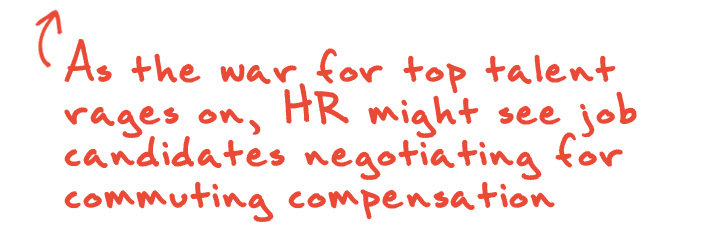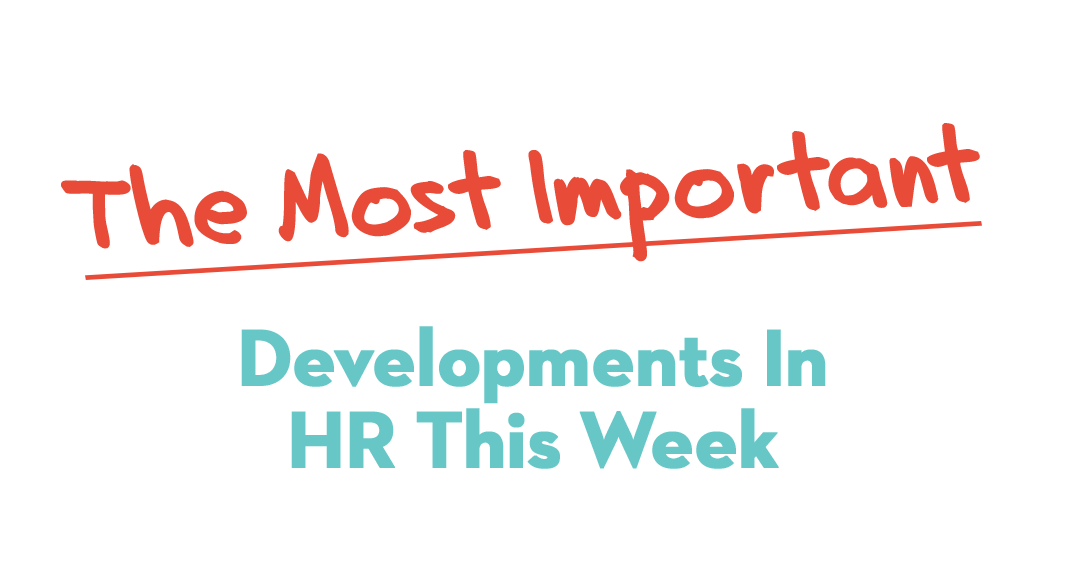
By 2030, we’ll see developments that may be as profound as those of a hundred years before. Radical changes—“horses-to-cars” changes, “how-we-think-about-mobility” changes—are coming, even faster this time, and across multiple dimensions. The characteristics of mobility at the second great inflection point will be significantly, not just marginally, better. Electric and autonomous vehicles, more interconnected and intelligent road networks, new customer interfaces and services, and a dramatically different competitive landscape in which tech giants, start-ups, and OEMs mix and mingle are just a few of the shifts in store. McKinsey & Company


Last year, more workers quit than at any time since 2001, and experts say that’s not going to slow down anytime soon. The Bureau of Labor Statistics tells us more than 3.5 million employees quit their jobs every month. HR pros know what kinds of headaches high turnover can cause, so we’re always looking for ways to get good people to stay. LinkedIn just released its 2019 Workforce Learning Report, which offered some insight into finding the holy grail of employee retention. It’s an HR issue. Most employees, 94 percent, say that they would stay at a company longer if it simply invested in helping them learn. Employers are catching on, investing more in training and development of workers. CNBC


This week, the U.S. Citizenship and Immigration Services told us we’ve now reached the limit of 33,000 H-2B visa petitions for the second half of FY 2019. So, that’s it, with the exception of current H-2B workers who are already in the U.S. and petitioning to extend their stay. What does it mean for employers in this tight labor market, especially in industries like hospitality and landscaping that rely on temporary workers that tend to come from other countries? More trouble in hiring and uncertainty of how much business they can take on with short staffs. Last year, we saw businesses in industries that employ seasonal workers taking a huge hit, some even closing their doors, because they couldn’t find enough people to fill those jobs. Not a stretch to think we might be in that same boat when tourist season comes around this year. USCIS


Ikea has found itself on the receiving end of a class action lawsuit alleging age discrimination. If that sounds familiar, it’s because this is the fifth age discrimination lawsuit Ikea has been hit with in just over a year. All argue that the Swedish furniture giant has fostered a workplace culture that systematically recruits, develops, and promotes young talent rather than workers over 40. The current lawsuit alleges that a 54-year-old employee was continually denied promotions despite an exemplary work record. Ikea HR classified him as “lacking in potential” despite the man’s stellar performance reviews and praise from his managers, one of whom said he will “definitely climb the Ikea ladder.” Yet, he was recently denied a promotion (again), which was given to an outside applicant 20 years his junior who hiring managers said was “young and energetic.” Newsflash: Fifty-four isn’t old. People don’t retire at 62 anymore. They’re working much longer, especially in industries like retail. Fast Company


Commute discrimination is really a thing, according to a study Notre Dame released (and we told you about) last summer. They conducted the study in D.C., and a report released by Bloomberg this week tells us why. Residents who live within 65 miles of D.C. spend more time commuting to work than anyone else in large metro areas of the country — an average of 388 hours per year. That shakes out to just under two-and-a-half weeks of their lives. And the cost to those commuters? Between $9,874 and $14,612 per year. Bloomberg calculated it by converting total commuter hours into a dollar amount based on the average annual income of a full-time employee in the region. Other metros with wicked commutes include Philadelphia, Chicago, Dallas, Atlanta, NYC, and Minneapolis. So, the question for HR becomes: What do we do with this information when hiring? It’s a serious bummer to spend all of that time commuting, but that’s the job candidate’s choice to make, not ours. Bloomberg


Written and directed by Kristen Lester, and produced by Gillian Libbert-Ducan, the 8-minute film seeks to explore male-dominated workplaces and what women do in order to try and fit in. The short tells the story of a highly-energetic ball of yarn named Purl, who begins working at a male-centric financial startup called B.R.O. Capital. As she tries to knit together plans for the company’s direction, the young newcomer is met with some challenges as she interacts with her hypermasculine coworkers. Hypebeast










